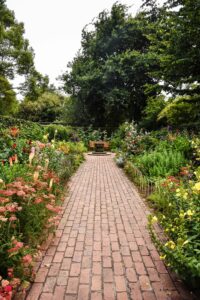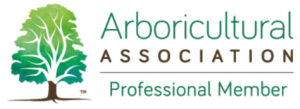We cover all aspects of tree work in Norwich and the whole of Norfolk.
What to look for if your tree is unhealthy or in decline?
Now it’s August trees are in leaf with broadleaf trees, such as oak, producing acorns, and pine trees producing cones.
A healthy tree has green leaves and plenty of them. Simply, the canopy should be full and the green a deep green. A variation may be caused by the tree’s age, but after last year’s drought we are seeing more decline in the following ways:
Leaves turning brown instead of green, such as the leaves of an oak. If they are brown and lifeless, and the branches of the tree are clearly seen, it is likely in decline and there is foreseeably no recovery. In some cases, trees are now dead with no leaves at all.
If the leaf size seems smaller, or seeds are abundant in the form of acorns, then the tree is in reduced health and palliative care is recommended.

In ash trees, the decline is dominated by ash dieback disease. With dieback, a proportion of the tree crown will be dead branches. Current ash dieback treatment guidance is to manage that decline in stages.
Sycamore trees are showing sooty bark disease. It shows on the south side of the tree trunk as back patches and it’s a sign of decline and foreseeable death.
Lime trees seem in good shape overall; good management of deadwood is recommended.
With pine trees, dieback has been seen alongside the browning of the foliage caused by red band needle blight. It’s a slow decline and the risk needs to be managed.
Fungus:
Now and into autumn is the time to be looking for seasonal brackets associated with trees. At the base, in the tree root area, and even in the canopy. If you see them report it and seek advice as it may indicate decay. The result of last year’s drought stress will continue to show its hand.
Why has this happened?
Last year many trees shed their leaves early under drought stress and autumn was early. Therefore, the trees’ stores of essential sugars and starch were reduced as the leaves are used in photosynthesis. This combined with the lack of water in the soil slowing the same process, has caused the decline.

So, what should you do?
Seek advice if the leaves are brown, gone completely, or if you see sooty mould or fungus. Expert opinion will save you time, and ensure safety and certainty going forward.
If the tree looks unwell with smaller leaves perhaps air spading and soil treatments may help. Also, the use of mulching around the tree root area perhaps in the autumn as this helps with the soil in the rooting area.
How can we help?
We’ll ask you to send an image by email. From a desktop assessment, we can take an initial view of the tree or all the trees. And from then, if it’s deemed necessary, we shall schedule to attend. We are happy to discuss the best approach by phone, WhatsApp, or email.
Many trees may require a survey. This data is best captured on an accessible database where you can review and assess mapped detail of each tree’s condition and risk, with the associated scope of works.
This data is what the local planning department is looking for within a successful planning application.
Next steps:
We will schedule a tree team to come to you. They come armed with risk assessment and method statements that are shared with you.
Then as the tree team sets about its work, they can see what is required, and as the work is completed or added, the cloud database is updated and changed.
All our tree services are completed by a qualified tree surgeon team who are easy to work with. We explain everything beforehand, during the tree works, and afterward, we make sure it’s clean and tidy.
With some trees, we remove the deadwood and at the same time carry out a climbed inspection. This will save you financially and will ensure the correct tree works are completed if we then require a planning application.
Our waste is recycled either you can reuse it within your garden or landscape as mulch around trees or within the new planting areas. This is always in demand from livestock owners and allotment owners for weed suppressing. This fits with our carbon-neutral approach to recycling
Wood can be retained for habitat creation or landscape use such as path edges or features such as stumpery. Some people want it for firewood. This again fits with our carbon-neutral approach to recycling.
Afterward, what you can expect from us?
We will stay in touch with you as keeping regular inspections of trees over time ensures we can take a long-term view of your trees’ health. Simply we are looking at things that can be hundreds of years old so the maximum period to monitor a healthy tree is 5 years.
And because of the likelihood of storm damage, heavy snowfall, ice, heat, and drought events, we are keen to keep in touch, so appropriate decisions are made.
Tree planting – Then we look at the future of a landscape that involves tree
and shrub planting. With climate change, new species choices, and variations in
tree types may protect the tree landscape for the next generations.
Biodiversity – Nature fauna is to be supported by the planting. Similar species that are more resilient to climate change ensure we can retain local fauna and flora.

Case study
Large estates such as a hospital, a care home, a school, a parish council, and several stately homes are recent clients.
Once the client knows how the data is to be captured and how it is to be presented the survey takes place.
The surveyor is responsible for looking at the base of the tree, the stem (trunk), and the canopy of the tree. Sometimes a tree is ivy covered or there are more complex issues such as internal decay. A physical inspection by climbing the tree is recommended before a decision is made on what to do with it.
The survey data sets the priorities for the tree work and associated planned budgets and expenditure reduction. The team-based approach is the legally defendable way to manage trees under the National Tree Safety Group guidelines.
The key is for the client to understand the data and findings of the survey. Teams or Zoom conversations help to open dialogue and then all can see what risk can be reduced and this saves time.
The key is to reduce the complaints and calm the stress.
Whilst tree works had taken place with the previous surgeons it’s often better to take an overview with the survey and then plan the works-based priorities. Working alongside on-site gardeners provides an opportunity for real-time information in the team-based approach to tree management. A gardener may see an acute change such as fungus or storm damage that can be fed into the tree management plan and adjust the planned works for the trees. It’s an approach that has the benefit of allowing the client to see all are acting in their best interests. Plus, the onsite gardeners or grounds maintenance contractors will then see the benefit of keen observations.
Stakeholders
Accountability for tree works and planning can be justified when tree data is captured.


An example of a dead maple tree. This tree was seen some 12 months ago before this image from June 2023. It shows no leaves in comparison to the tree next to it which has leaves. There is no likelihood of the tree recovering from this condition. Gradually the tree would decay, and branches would fall. The risk then for climbing this tree is reduced meaning the removal would require mechanical access.
The removal of the tree was arranged after careful liaison with Norwich City Council’s planning department using a 5-day notice. The woodchip was retained on site for mulching around adjacent trees and the wood was kept by the client.
The client has plans for replanting within this area to retain the character of the landscape and ensure the biodiversity of the wildlife in the city centre woodland.
All trees require regular reviews for pruning. By calling us at Ace of Spades Gardens Ltd you will get prompt and timely service.









